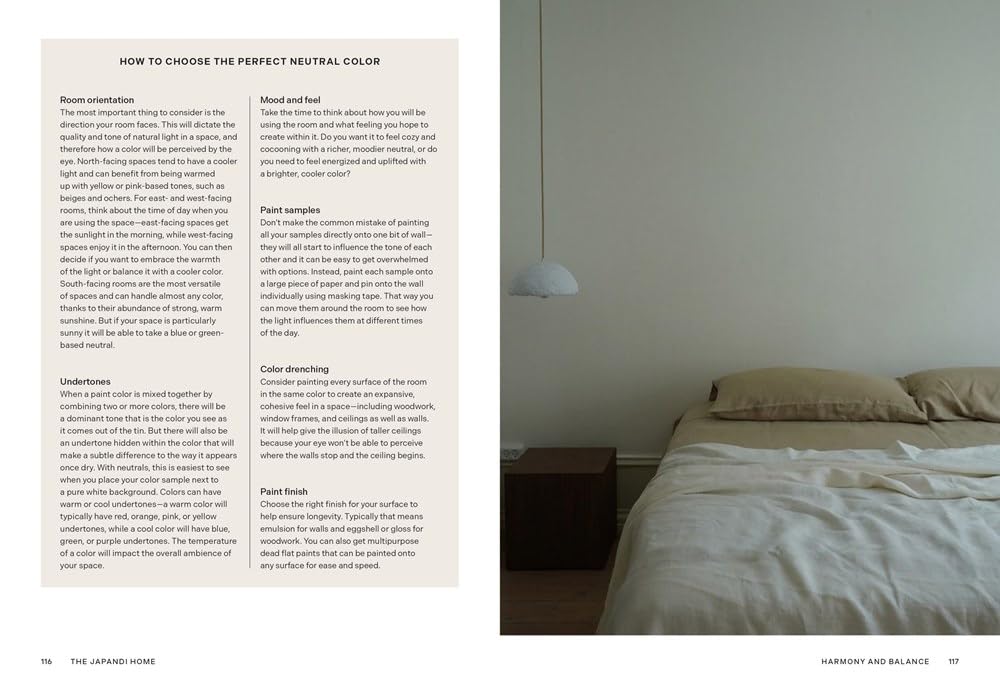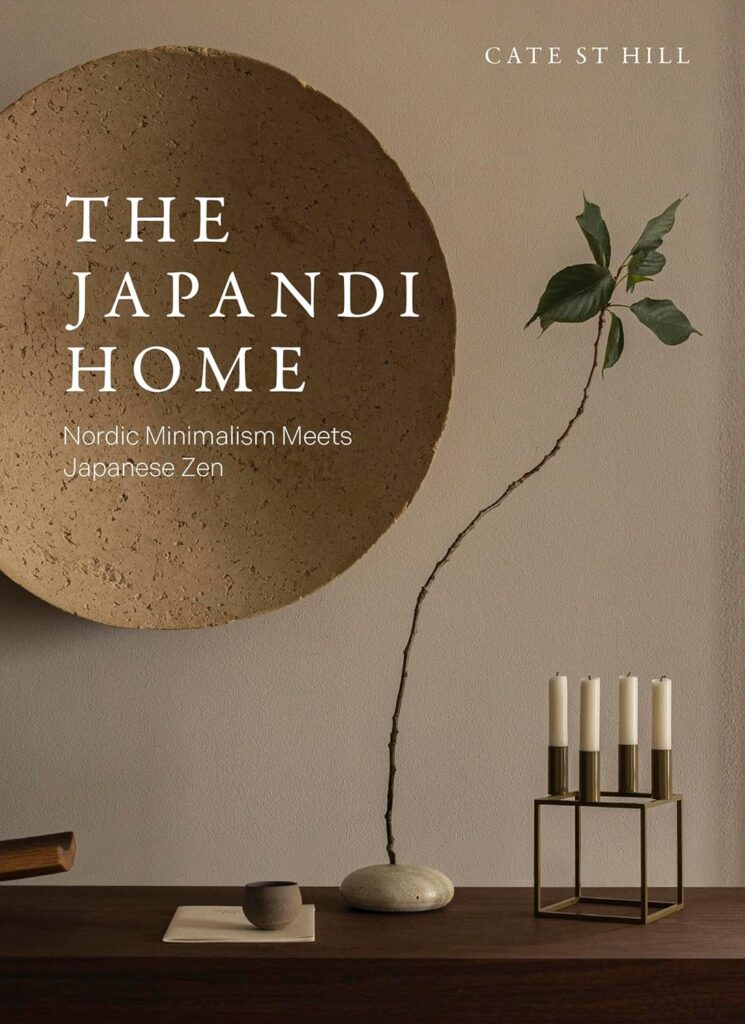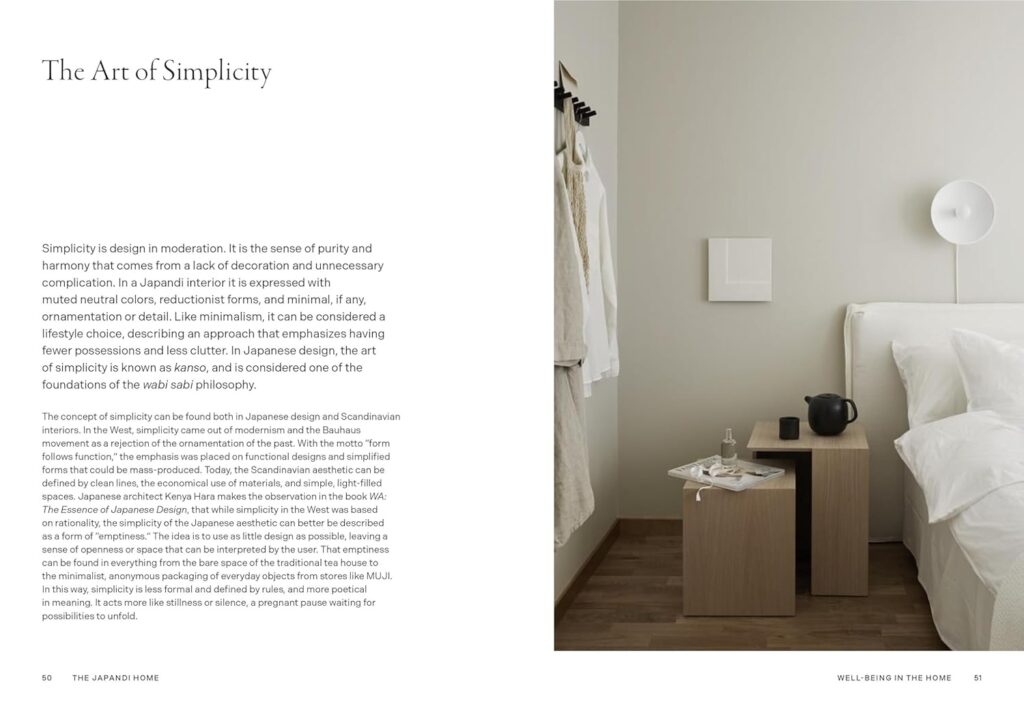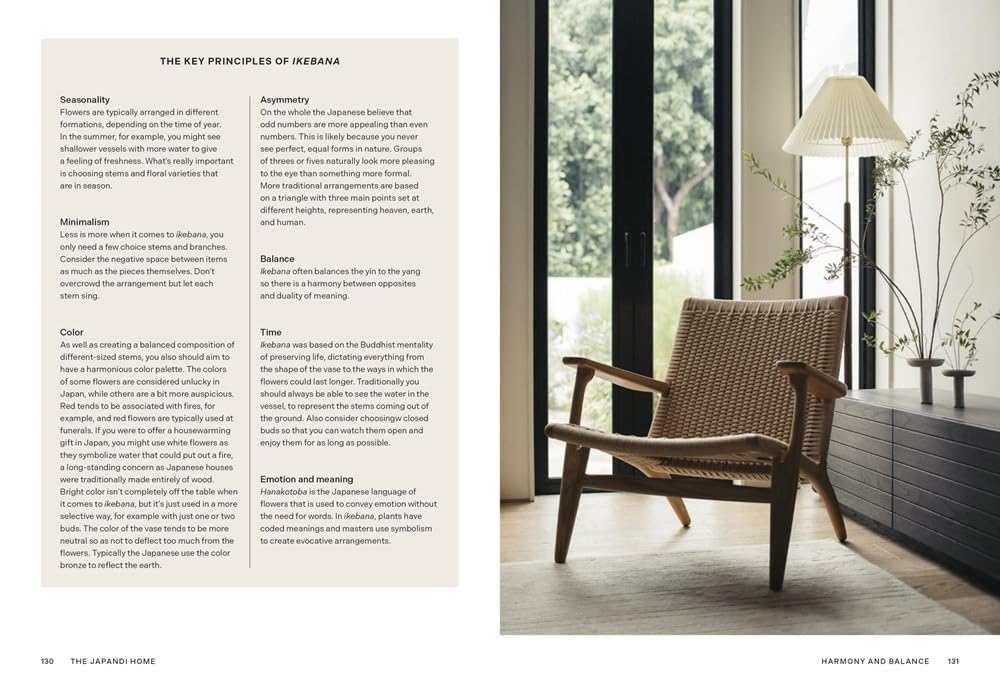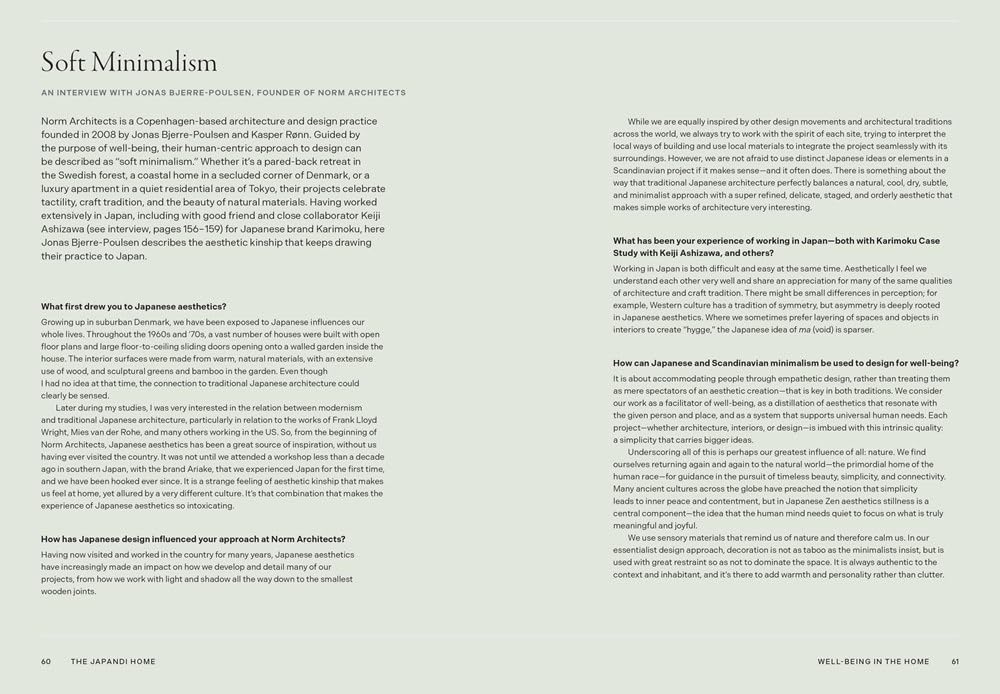?Have you ever wanted to bring the calm clarity of Japanese zen and the warm functionality of Nordic minimalism into your own home?
The Japandi Home: Quick Overview
You’ll find that The Japandi Home: Nordic Minimalism Meets Japanese Zen Hardcover – May 6, 2025 presents the hybrid aesthetic as both a lifestyle and a design toolkit. This section gives you a snapshot so you can decide whether this book fits your needs before you read further.
What this book promises
You can expect a marriage of two design philosophies that value restraint, craftsmanship, and human-centered spaces. The book sets out to teach you how to create interiors that feel refined yet lived-in, with clear guidance and visual inspiration.
Who should consider this book
If your taste is for uncluttered rooms, warm neutrals, and purposeful objects, this book is for you. It’s also useful if you’re a designer, renter, or homeowner who wants practical steps rather than abstract theory.
The Japandi Home: Nordic Minimalism Meets Japanese Zen Hardcover – May 6, 2025
$23.49 In Stock
About the Author and Publication
You’ll want to know who’s giving the guidance and when it was published so you can gauge relevance and authority.
Author background and credentials
The author’s experience blends knowledge of Scandinavian and Japanese design traditions, along with real-world styling work. You’ll likely appreciate that the voice feels informed and approachable rather than academic.
Publication details and format
Published in hardback on May 6, 2025, the book’s physical format makes it a durable reference you can leave on a coffee table. The hardcover gives it a tactile quality that matches the book’s emphasis on materiality and texture.
Design, Layout, and Usability
You’ll probably judge a design book by how it looks and reads; this part breaks down the practicalities of using it.
Page layout and typography
The typography is clean and generous, which makes the information easy to scan and revisit. You’ll find that the layout mirrors the principles discussed—ample white space, thoughtful margins, and clear headings.
Navigation and structure
The chapters are organized logically so you can jump to specific rooms, themes, or styling tips. You’ll appreciate call-out boxes and summary takeaways that make implementation simpler.
Content and Chapter Breakdown
You’ll get step-by-step guidance as well as contextual essays that explain the origin of Japandi. This section outlines the approach and what chapters cover.
Introductory philosophy and history
Early chapters provide a concise history of Japanese minimalism and Scandinavian design, helping you understand the shared values behind the hybrid. You’ll gain perspective on why simplicity and craftsmanship are central to both traditions.
Practical chapters and case studies
Many chapters are practical, with room-by-room examples and before-and-after scenarios. You’ll find case studies that show how principles were applied in real homes, which helps you translate concepts into action.
Recipes for design — principles and rules
The book offers concrete rules you can follow, such as limiting a palette, selecting a focal piece, or balancing warm and cool textures. You’ll benefit from checklists and quick-reference rules that help you make decisions when you’re arranging a space.
Visuals and Photography
A design book lives and dies by its imagery; you’ll want to know whether the photographs support your styling goals.
Quality and style of photography
Photographs are thoughtfully shot with emphasis on natural light, texture, and composition. You’ll notice that images are curated to show both the minimalist restraint and cozy warmth that define Japandi.
Use of diagrams and sketches
The book includes sketches and layout diagrams that demonstrate furniture placement, scale, and sightlines. You’ll find these visual tools helpful when translating ideas into floor plans.
Materials, Color, and Texture
You’ll be selecting materials and finishes, and this book gives a framework for choices that align with Japandi principles.
Palette recommendations
Expect muted palettes centered on off-whites, soft grays, and warm beiges, with occasional deep indigo or charcoal accents. You’ll learn how to mix warm woods and cool textiles so your rooms feel balanced rather than flat.
Material selections and tactile guidance
Materials honored here include light and mid-toned woods, matte ceramics, natural fiber rugs, and linen textiles. You’ll appreciate the emphasis on tactile combinations that create an inviting yet restrained atmosphere.
Furniture and Object Selection
You’ll be making choices about furniture scale, lines, and function. This section explains how the book guides you through those decisions.
Finding balance in furniture choices
The book teaches you to pick fewer, better-quality pieces and to prioritize functionality. You’ll be encouraged to choose furniture with clean lines and subtle curves that resonate with both Scandinavian and Japanese craftsmanship.
Accessorizing with purpose
Accessorial elements are used sparingly and deliberately—think a single ceramic vase, a woven basket, or a handcrafted bowl. You’ll learn to treat accessories as accents that reinforce a room’s mood rather than clutter.
Room-by-Room Guidance
You’ll want actionable advice for each space in your home. The book provides room-specific solutions and styling diagrams.
Living room strategies
For living rooms, the book emphasizes conversational seating arrangements and layered lighting. You’ll be guided to use texture and scale to create warmth without excess.
Kitchen and dining suggestions
Kitchens and dining areas get the dual focus on functionality and sensory pleasure—durable surfaces, simple storage, and quiet tableware. You’ll find guidance on how to structure work zones and select tactile dishware that invites lingering meals.
Bedroom and bathroom tips
Sleep spaces prioritize calm palettes and breathable textiles, while bathrooms are simplified sanctuaries with an emphasis on natural materials. You’ll be advised to minimize visual clutter and prioritize quality linens and storage.
Practical Projects and DIY
You’ll likely want to know if the book helps you implement its ideas on a budget or with your own hands.
Easy weekend projects
The book includes approachable DIYs like building simple shelving, finishing a side table, or making a minimalist wall hanging. You’ll find step-by-step instructions that don’t require specialized tools.
Budget-conscious updates
You’ll get advice for swapping textiles, decluttering, and selecting multi-functional pieces to achieve a Japandi look without a total renovation. The book offers cost-effective strategies like restyling existing furniture with new textiles or paint.
Sustainability and Sourcing
You’ll care about how materials are sourced and the environmental footprint of your choices; this part addresses those questions.
Responsible material choices
The book encourages you to favor long-lasting materials, reclaimed wood, and local craftsmanship where possible. You’ll appreciate tips on selecting durable finishes that age well instead of trendy disposables.
Where to buy and what to avoid
You’ll get guidelines for selecting reputable brands, artisans, and secondhand sources. The book also flags greenwashing and recommends questions to ask before purchasing mass-produced items.
How to Use This Book in Real Life
You’ll want practical methods for applying what you’ve read to your own home in manageable steps.
Create a personal styling roadmap
The book helps you make a room-by-room plan and set realistic timelines for changes. You’ll be encouraged to begin with a single room and expand elements as you gain confidence.
Mixing Japandi with your current decor
You can keep sentimental or inherited items while adapting their presentation to Japandi principles. The book shows you how to harmonize existing pieces with new accents and color corrections.
Pros and Cons
You’ll find a balanced assessment helpful when deciding whether to buy. Below is a table summarizing the main strengths and limitations.
| Aspect | Strengths — What you’ll like | Limitations — What to be aware of |
|---|---|---|
| Aesthetic guidance | Clear, cohesive Japandi visual language that’s easy to replicate | May feel prescriptive if you prefer eclectic or maximalist styles |
| Practicality | Includes actionable tips, DIY projects, and room diagrams | Some projects assume basic DIY skills and tools |
| Photography | High-quality images that communicate mood and detail | Could feature more diverse home sizes and cultural contexts |
| Materials & sustainability | Emphasizes longevity, natural materials, and responsible sourcing | Sourcing artisanal items may be costly or regionally limited |
| Accessibility | Useable by renters and homeowners alike with budget alternatives | Some recommended brands or products might be unavailable in your area |
| Format | Durable hardcover with tactile appeal, good for repeated referencing | Hardcover price point may be higher than paperback or ebook alternatives |
You’ll find this table useful when weighing the book’s value for your specific situation.
Strengths in Depth
You’ll want to know exactly what this book does well, beyond a surface appraisal.
Clarity of aesthetic guidance
The book excels at describing the Japandi aesthetic in concrete terms, making it easier for you to replicate in your own home. You’ll find the pairings of color, texture, and scale particularly instructive.
Practical and actionable content
You’ll benefit from room-by-room instructions and checklists that let you act immediately. The projects are realistic and designed for quick wins that build momentum.
Strong visual storytelling
Images are used to build a mood and then break down how that mood was achieved. You’ll find that before-and-after images and process shots demystify the transformation.
Limitations and What You Might Not Like
You’ll appreciate a fair critique so you can decide if the book matches your needs and constraints.
Potentially narrow stylistic focus
If you love maximalism, bold color, or ornate decoration, this book may not speak to your taste. You’ll need to be comfortable with restraint and selective object choices.
Regional sourcing challenges
Some recommended makers and materials might be hard to find outside certain regions. You’ll sometimes need to adapt or substitute locally available options.
Practical constraints for renters
While many tips are renter-friendly, some suggestions assume you can make semi-permanent changes. You’ll need to prioritize reversible updates if you’re in a temporary space.
Comparison with Similar Titles
You’ll want to know how this book stacks up against other popular design books aimed at minimalism or Scandinavian/Japanese influences.
How it compares to Scandinavian design books
This book shares the Scandinavian emphasis on function and light, but it adds a Japanese reverence for negative space and ritual. You’ll find it more contemplative and restrained than some Scandinavian-only guides.
How it compares to Japanese minimalism books
Compared to books focused solely on Japanese minimalism, this title is warmer and more textured due to its Nordic influences. You’ll gain practical furniture and textile guidance that Japanese-only books sometimes omit.
Cost and Value Considerations
You’ll likely ask whether the price justifies the purchase, especially in hardcover format.
Is it worth the hardcover price?
If you plan to use the book as an ongoing reference, the hardcover’s durability and visual appeal make it a good investment. You’ll appreciate having a tactile object to consult when making design decisions.
Alternatives if the cost is a concern
You could consider borrowing from a library, buying a digital edition, or scanning key pages in a design journal. You’ll also get many actionable ideas that don’t require immediate purchases—decluttering, editing, and swapping textiles are low-cost first steps.
Practical Examples and Case Studies
You’ll learn best through real-life examples; this book includes several that show stepwise transformations.
Small apartment makeover
The book walks through maximizing storage, choosing compact furniture, and creating visual continuity in small spaces. You’ll get tips on scale and multifunctional pieces to make a tiny space feel calm and roomy.
Family home adaptation
There are examples showing how to adapt Japandi principles for families, focusing on durable surfaces and soft, forgiving textiles. You’ll learn how to balance a clean aesthetic with child-friendly practicality.
Seasonal updates and adaptable styling
The book recommends easy seasonal swaps—textiles, plants, and lighting—to refresh a room’s mood throughout the year. You’ll find this especially useful if you like periodic updates without full redecorations.
Making It Personal: Adapting Japandi to Your Lifestyle
You’ll want to keep your home personal while adopting new aesthetics; the book helps you do that.
Balancing minimalism and sentiment
The guidance shows you how to keep meaningful items in a way that doesn’t clutter visual fields. You’ll be encouraged to display cherished pieces thoughtfully and to edit with intention.
Integrating hobbies and collections
If you collect ceramics, books, or textiles, the book offers strategies for integrating these into a calm environment. You’ll learn to showcase collections as curated vignettes rather than scattered displays.
Tips for Implementation
You’ll appreciate a short list of practical starting actions you can take after reading the book.
Immediate steps to get started
Begin by editing a single surface and limiting your palette on that surface to two or three tones. You’ll also want to establish a curated focal point in each room—one object or piece of furniture that anchors the space.
Mid-term projects to plan
Plan a storage solution or a furniture swap that improves function while reinforcing aesthetic unity. You’ll benefit from measuring, sketching, and choosing a single anchor material like a wood tone or textile repeat.
Long-term goals
Consider a phased approach to renovation, starting with lighting and textiles, then moving to larger furniture items. You’ll find this reduces overwhelm and spreads cost over time.
Final Verdict and Recommendation
You’ll want a succinct takeaway to know whether this book should go on your shelf.
Summary judgment
The Japandi Home: Nordic Minimalism Meets Japanese Zen Hardcover – May 6, 2025 is an accessible, richly photographed, and practical manual for anyone who wants calming, functional interiors rooted in quality materials. You’ll find it especially helpful if you value understated beauty, tactile surfaces, and purposeful design choices.
Who will love this book most
You’ll love this book if you’re drawn to warm minimalism, thoughtful curation, and actionable guidance for real homes. It’s also a good resource for designers seeking a compact yet thorough reference on combining these two design traditions.
Final recommendation
If you’re ready to simplify your spaces without making them sterile—and you want hands-on guidance and visual inspiration—this book is worth adding to your collection. You’ll get useful, repeatable techniques that help you create serene, human-centered interiors.
Purchase and Aftercare Notes
You’ll want to know what to expect after purchase and how to make the most of the book.
Caring for the book
Keep the hardcover on a coffee table or shelf where it’s easy to reference while you work on projects. You’ll want to handle it with clean hands if you’re working with materials to prevent stains.
Using it as a project planner
Treat the book as a workbook: annotate margins, keep swatches, and create project lists based on the checklists provided. You’ll get more value by actively applying the steps rather than simply admiring the photos.
If you’d like, you can tell me what rooms you’re thinking about changing and I’ll suggest a short, concrete Japandi plan tailored to your space and budget.
Disclosure: As an Amazon Associate, I earn from qualifying purchases.

